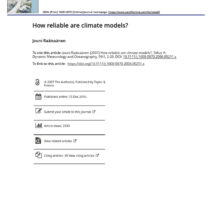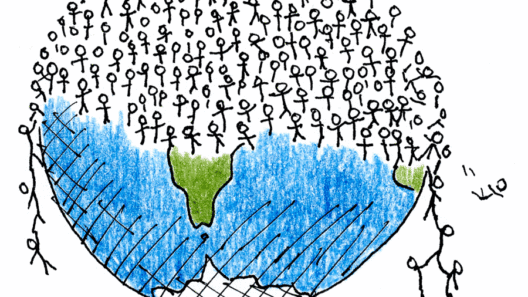Photosynthesis, the intricate process through which plants convert sunlight into sustenance, serves as the foundation for nearly all life on Earth. Through this natural phenomenon, carbon dioxide is transformed into glucose, while oxygen is released as a vital byproduct. However, as global temperatures escalate due to climate change, the delicate balance of this process is increasingly jeopardized. This article delves into the various manifestations of global warming and their unforeseen ramifications on photosynthesis, exploring the repercussions for plant life and, by extension, for the ecosystems that depend on them.
To fully comprehend the impact of global warming on photosynthesis, we must first consider the fundamentals of the process. Photosynthesis predominantly occurs in chloroplasts within plant cells, where light energy is harnessed to convert carbon dioxide and water into glucose. This dual requirement for light and CO2 makes plants particularly sensitive to climatic fluctuations. An uptick in temperature alters not only the availability of these essential components but also the physiological responses of plants, leading to a cascade of consequences.
One of the most immediate effects of global warming is the change in temperature patterns. Plants have evolved to optimize photosynthesis at particular temperature ranges. As air temperatures rise, so too does the opportunity for increased rates of photosynthesis—at least up to a certain threshold. Beyond this optimal point, however, photosynthesis can become less efficient. Elevated temperatures can cause stress, leading to thermal denaturation of key enzymes involved in the photosynthetic pathway. Consequently, as stress responses mobilize resources to maintain homeostasis, the plant may reallocate energy away from growth and reproduction. The implications for food supply and biodiversity become stark as productivity wanes.
Additionally, climate change influences precipitation patterns. Regions previously characterized by reliable rainfall may experience drought, while others face inundation. Water availability is crucial for photosynthesis, as plants require adequate moisture for optimal function. Drought conditions not only limit water uptake but also cause stomata—the tiny openings on leaves—to close, reducing CO2 absorption. As a result, photosynthetic efficiency declines, stunting growth and, in severe scenarios, leading to plant mortality. Conversely, plants in flood-prone areas may struggle with oxygen deprivation, leading to root rot and a similar decrease in photosynthetic capability.
The rising concentration of atmospheric CO2, often touted as beneficial for plant growth, presents its paradox. While increased CO2 levels can enhance photosynthesis up to a point, the accompanying dilemma is the corresponding increase in global temperatures. The benefits of higher CO2 concentrations are often mitigated by the adverse effects of thermal stress, water scarcity, and nutrient depletion, undermining the intended positive impact. Moreover, some plants exhibit a phenomenon called “CO2 fertilization,” where fast-growing species outcompete slower ones, leading to declines in overall biodiversity.
Moreover, as global temperatures escalate, the distribution of plant species will inevitably shift. Certain species may find their habitat unsuitable, leading to migrations towards cooler climates or higher altitudes. This shift can disrupt existing ecosystems, threatening both flora and fauna that are specifically adapted to particular environmental conditions. Invasive species may emerge as a result, exacerbating competition and diminishing native biodiversity. The consequences of these migrations extend beyond the plants themselves, affecting pollinators and herbivores whose interactions are tightly linked to local flora.
Furthermore, the phenomenon of phenological changes—shifts in the timing of biological events—has been increasingly documented. Earlier flowering times due to warmer temperatures can lead to mismatches between plant life cycles and those of pollinators. Such disruptions can severely impact seed production and plant reproduction, cascading through entire food webs. Similarly, some plants may experience stress as they misalign with seasonal weather patterns, facing frost damage or drought when they least expect it.
The consequences of these transformations extend beyond the entities directly involved. As forests and grasslands—the planet’s most significant carbon sinks—struggle to maintain their health and productivity, the repercussions for atmospheric carbon are profound. Failure to sequester carbon at adequate rates contributes to an acceleration of climate change, creating a self-reinforcing cycle that threatens plant life and the habitats that sustain us.
In conclusion, the peril posed to photosynthesis by global warming is multifaceted and troubling. As temperature variations, altered precipitation patterns, and rising CO2 levels wreak havoc on plant life, the consequences ripple through the very fabric of our ecosystems. Addressing these challenges requires an urgent reexamination of our approach to climate change, along with targeted conservation efforts to safeguard plant diversity and enhance resilience against environmental stresses. Strategies must include habitat restoration, biodiversity conservation, and the promotion of sustainable agricultural practices to mitigate the impact of climate change on the plants that form the bedrock of life on Earth.
Through understanding the correlation between climate dynamics and photosynthesis, we begin to grasp the complexity of ecological interdependencies and the urgent necessity for effective environmental stewardship. The preservation of plant life is not merely an ecological concern; it is a fundamental challenge that directly influences human survival and the health of our planet.







